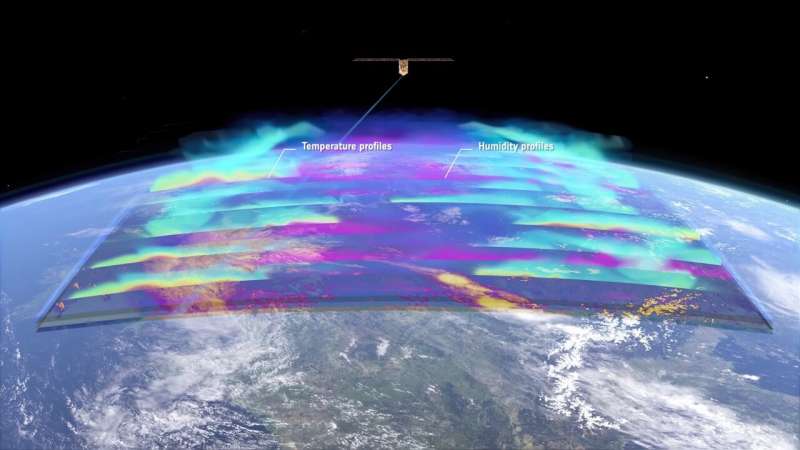
With ESA’s Arctic Weather Satellite due to launch in a few weeks, the satellite is now at the Vandenberg Space Force Base in California being readied for its big day. Once in orbit, this new mission will show how short-term weather forecasts in the Arctic and beyond could be improved.
The satellite, which weighs just 125 kg, carries a 19-channel cross-track scanning microwave radiometer that will yield high-resolution vertical profiles of atmospheric temperature and humidity in all weather conditions.
Humidity data are particularly important for weather forecasting in the Arctic since water vapor can change very quickly in this region.
Embracing the New Space approach, the Arctic Weather Satellite was developed and built within 36 months, and with a much tighter budget than traditional Earth observation missions.
It is actually a prototype—the forerunner of a potential constellation of satellites, called EPS-Sterna, that ESA would build for Eumetsat when this prototype has demonstrated its potential after a year in orbit.
The impacts of the climate crisis are being felt more in the Arctic compared to other parts of the world. Nevertheless, what happens in the Arctic doesn’t stay in the Arctic, so these changes are affecting the Earth’s system as a whole.
While the Arctic is the focus, meteorologists will also be able to use the potential constellation to improve weather forecasts globally. Information from the Arctic Weather Satellite and the Sterna constellation will also support research into climate change.
With so much at stake, engineers from over 30 different companies throughout Europe have worked tirelessly under ESA over the last three years to get to the point of the satellite being packed up and shipped from Sweden to the US for liftoff.
The Arctic Weather Satellite arrived safely at the Vandenberg Space Force Base in California on 1 June and first underwent a series of health checks.
Team members from OHB Sweden, the prime contractor for the mission, and team members from Exolaunch and ESA then placed the satellite on the system that will separate it from the rocket during the launch.
The Arctic Weather Satellite is now undergoing its final preparations for liftoff in a few weeks on the Space-X Falcon 9 Transporter-11 Mission. These steps include charging the satellite‘s battery before launch.
Once in orbit, the Arctic Weather Satellite will be operated from the KSAT operational center in Tromsø, Norway by a team from KSAT, OHB and ESA.
Provided by
European Space Agency
Research team prepares ESA’s Arctic Weather Satellite for liftoff (2024, June 17)
retrieved 18 June 2024
from https://phys.org/news/2024-06-team-esa-arctic-weather-satellite.html
part may be reproduced without the written permission. The content is provided for information purposes only.